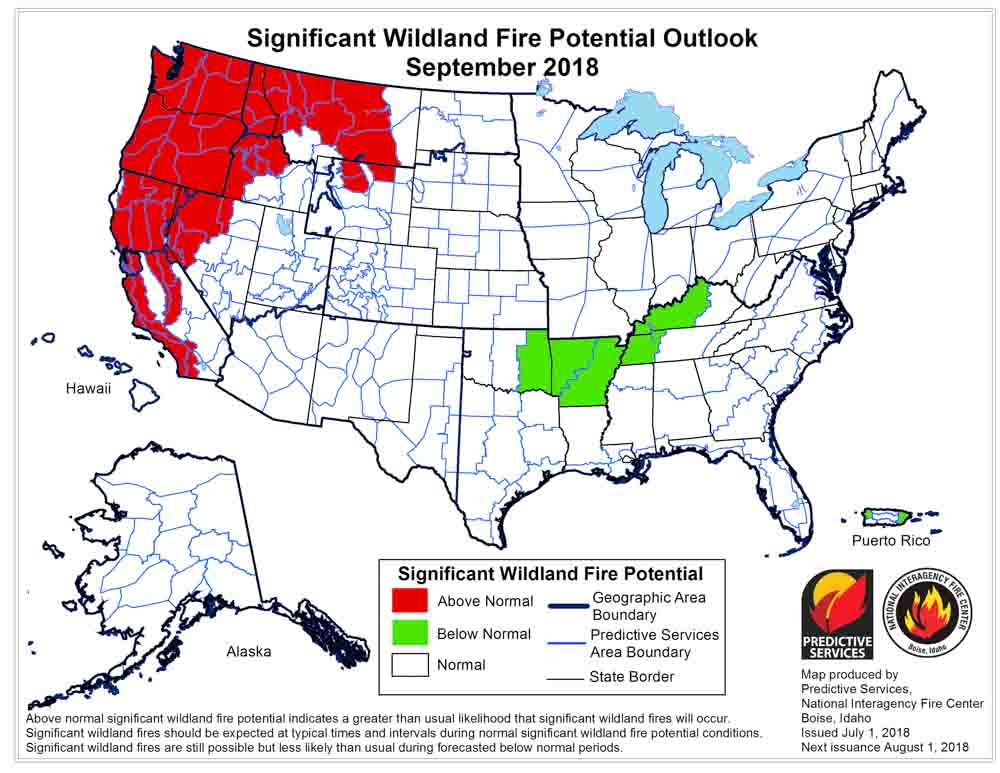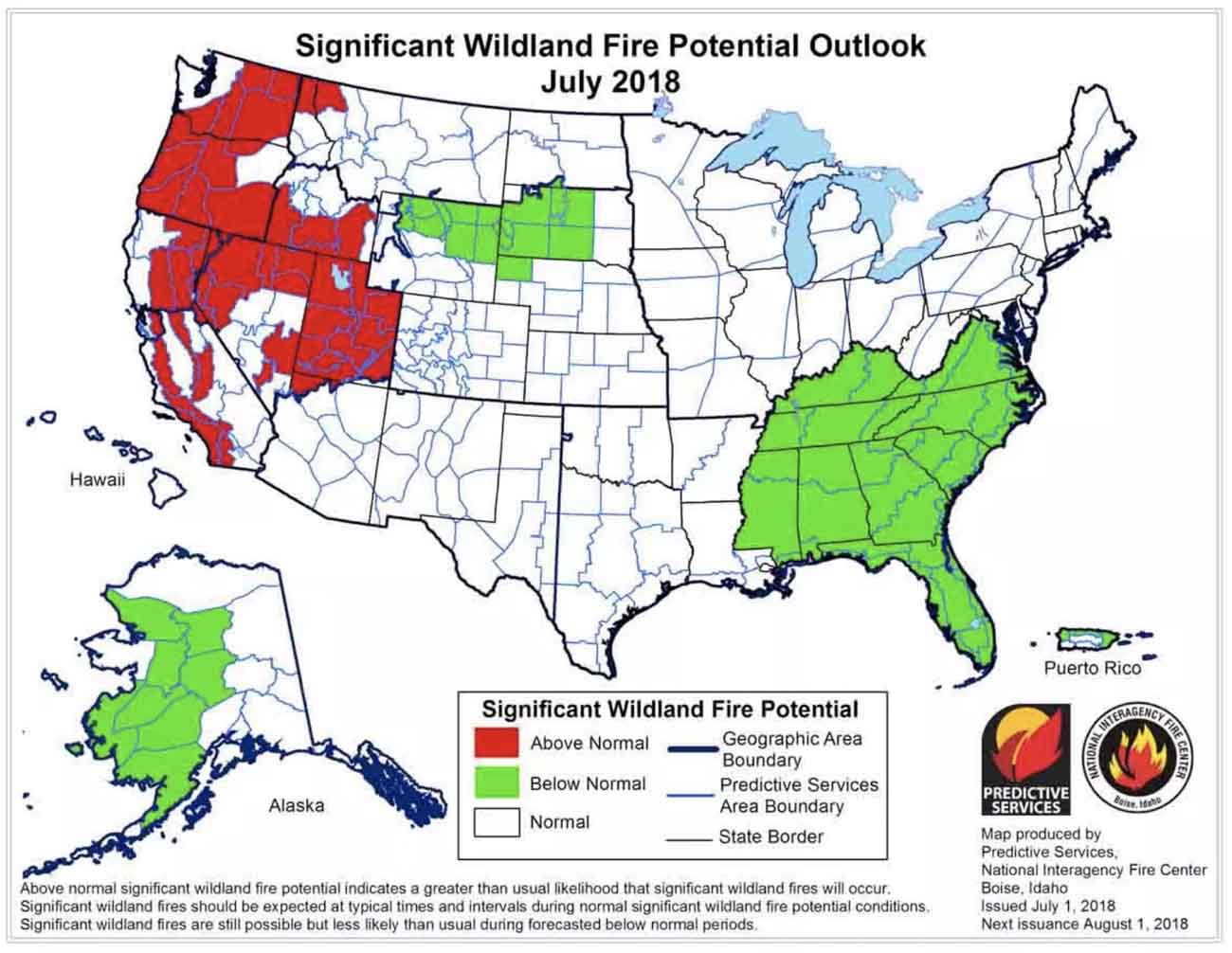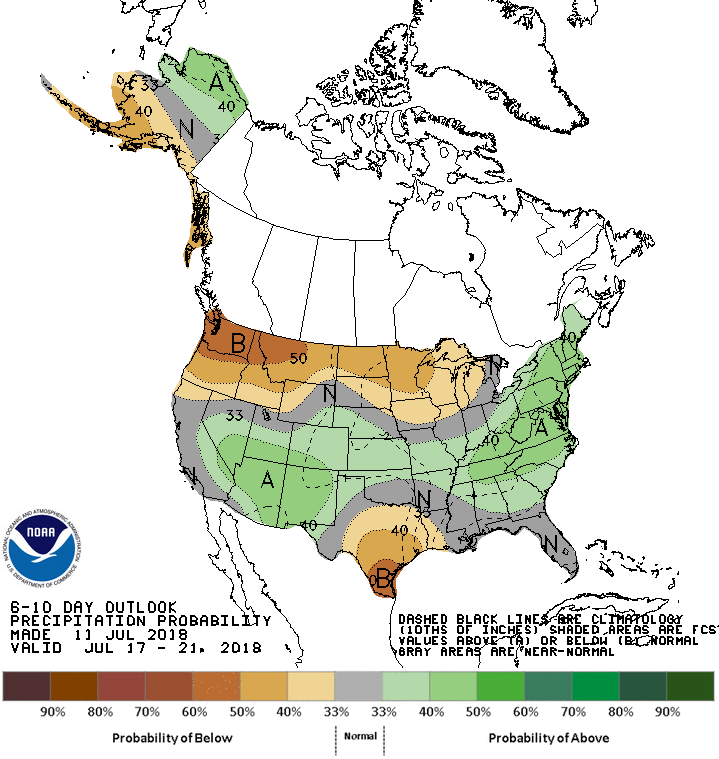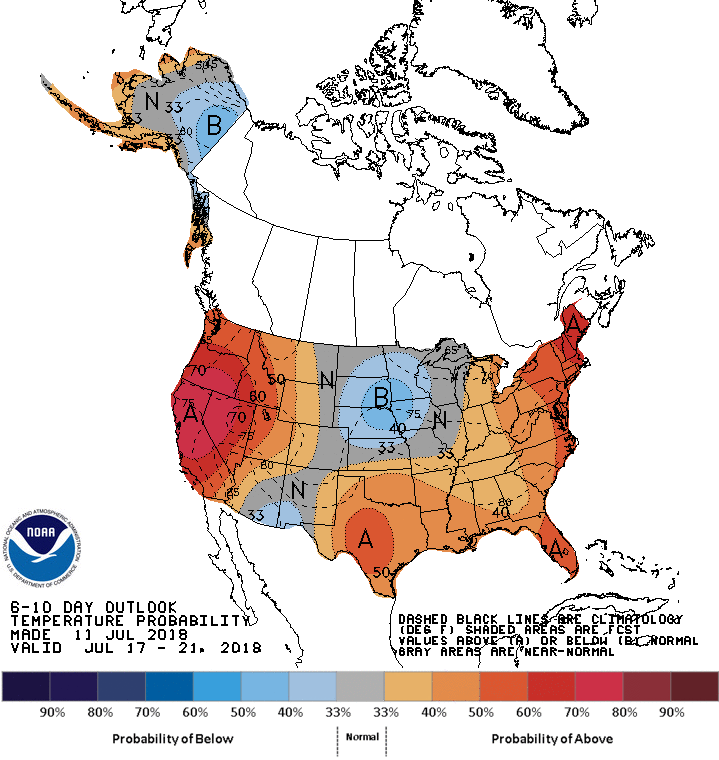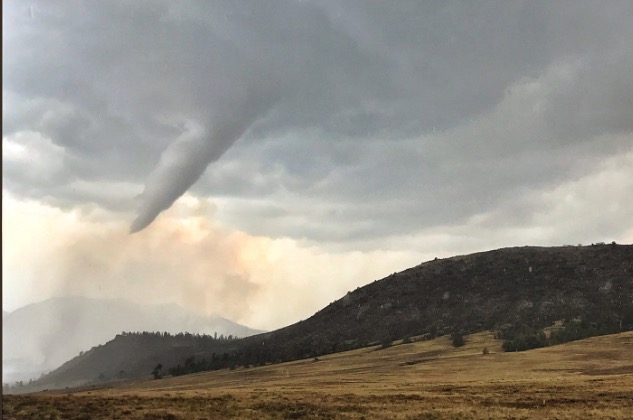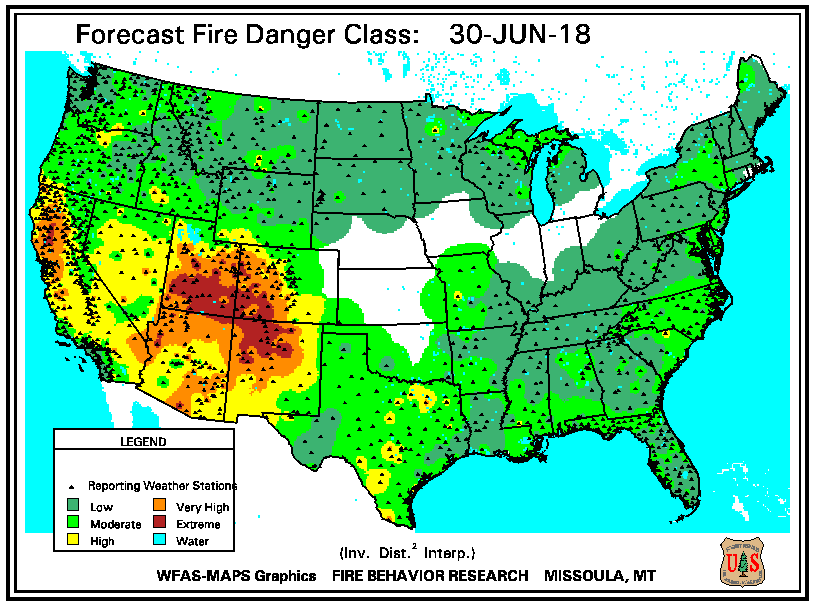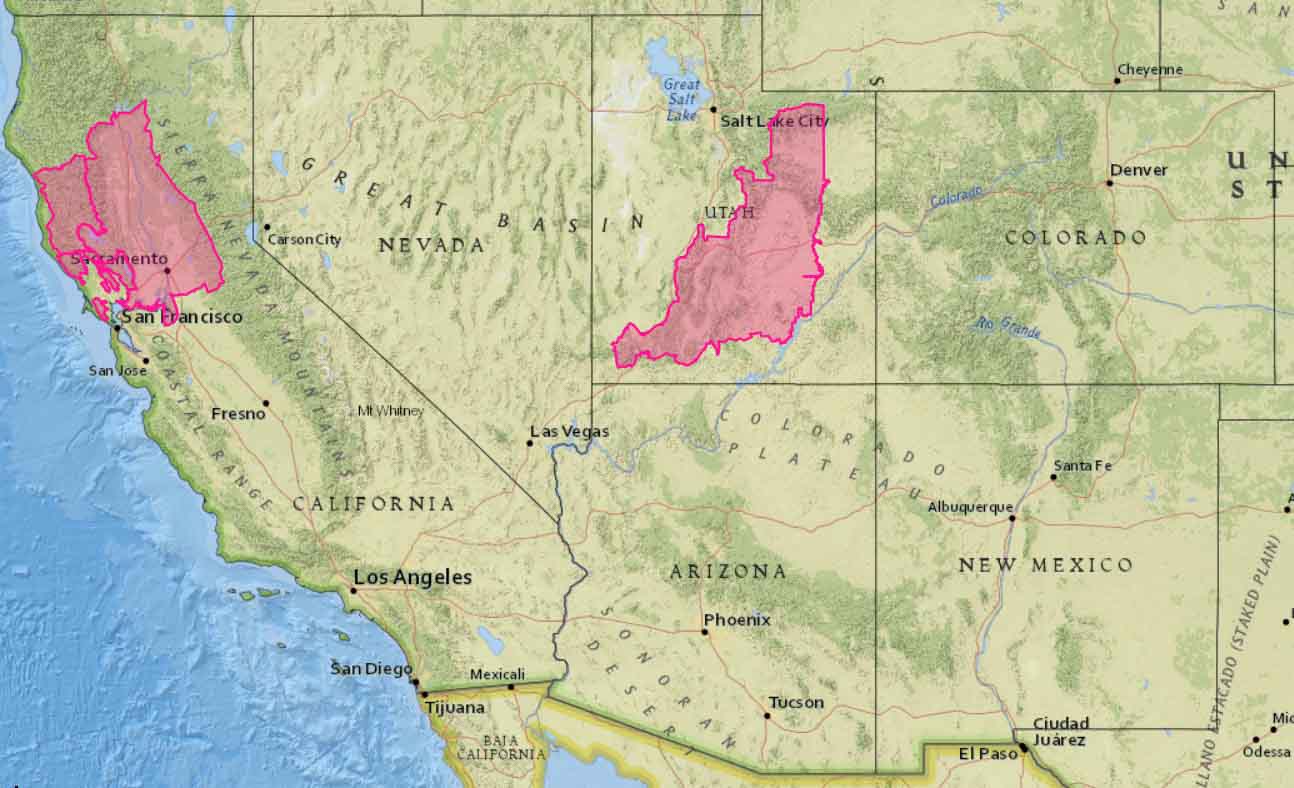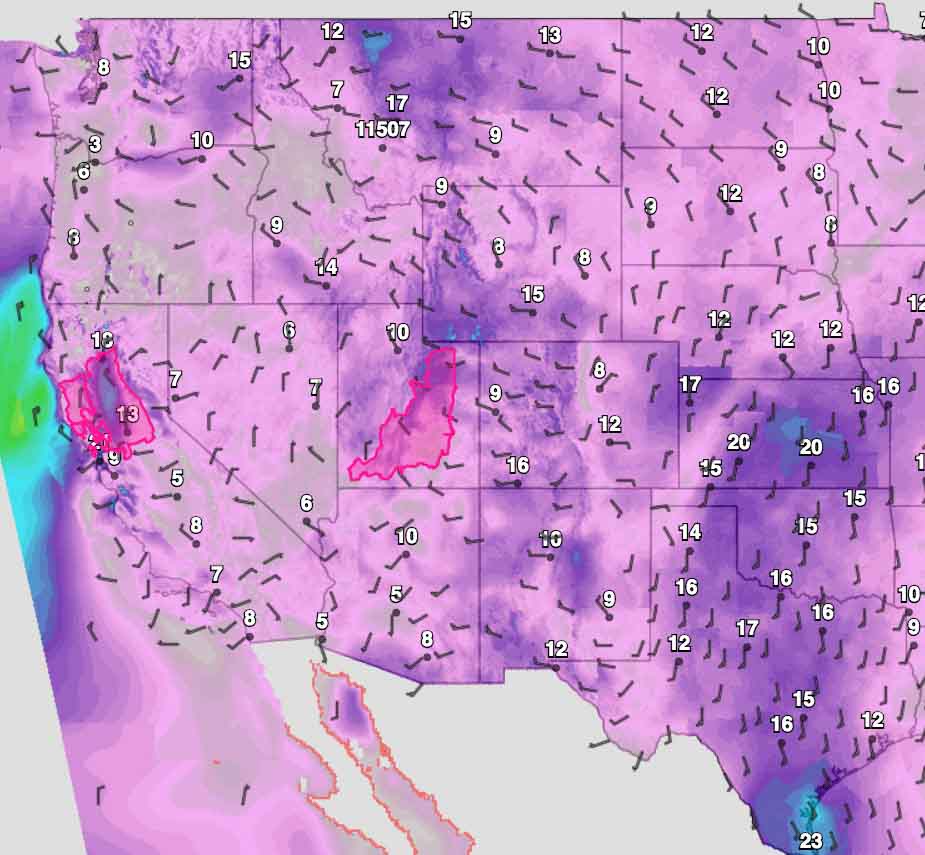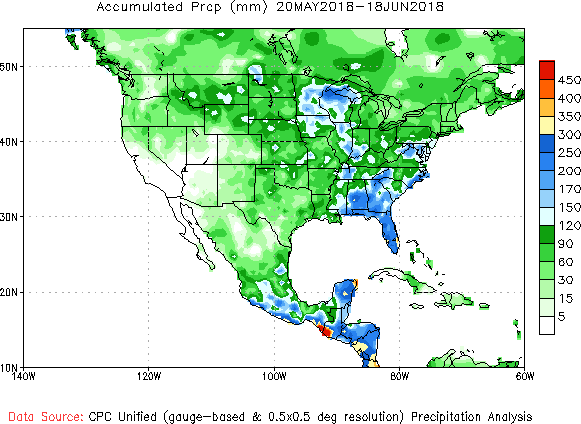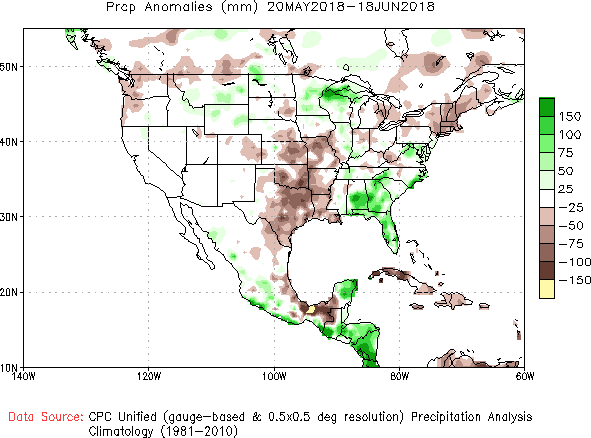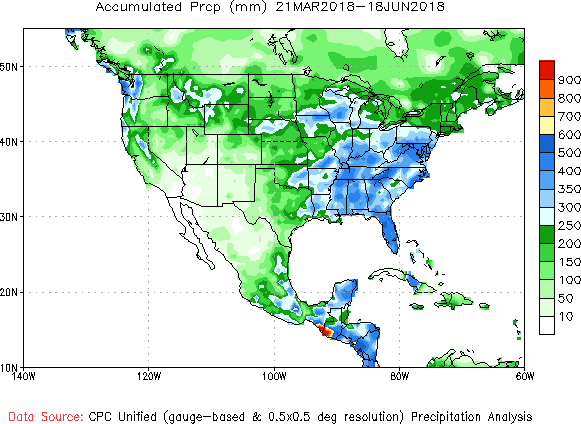Above: Wildfire potential for August, 2018. NIFC.
(Originally published at 1:20 p.m. MDT August 1, 2018)
On August 1 the Predictive Services section at the National Interagency Fire Center issued their Wildland Fire Potential Outlook for August through November. The data represents the cumulative forecasts of the ten Geographic Area Predictive Services Units and the National Predictive Services Unit.
If their analysis is correct, in August and September firefighters will be busy in Washington, Oregon, Idaho, California, and northern Nevada.
Below are:
- An excerpt from the NIFC narrative report for the next several months;
- NIFC’s monthly graphical outlooks;
- NOAA’s three-month temperature and precipitation forecasts; and,
- Drought Monitor.
“August is the peak month for fire activity across the West. Given the amount of lightning received along with preexisting heavy fuel loading and dryness, a very active month is expected with Above Normal significant wildland fire potential likely across portions of the Pacific Northwest, Northern Rockies, northern Great Basin, and California. Typically, a weather event occurs by mid-September that brings moisture to regions experiencing significant fire activity which allows for the western fire season to begin to decrease in activity. Given ongoing trends that support a normal seasonal progression and given a transition from ENSO Neutral conditions to El Niño, such an event is expected. Most regions will exit the fire season at this point, but only a brief lull is expected across California before it enters its fall fire season by October and November. Given ongoing dryness in the fuels, the fall season may very well be robust across portions of the state.”
Continue reading “Wildfire potential for August through November”


